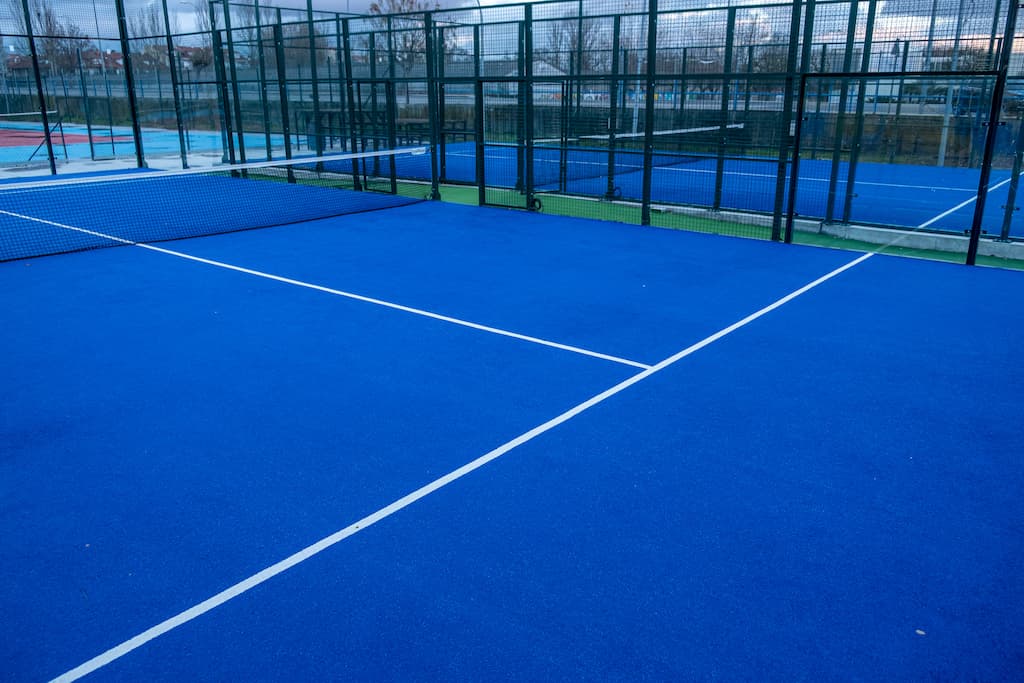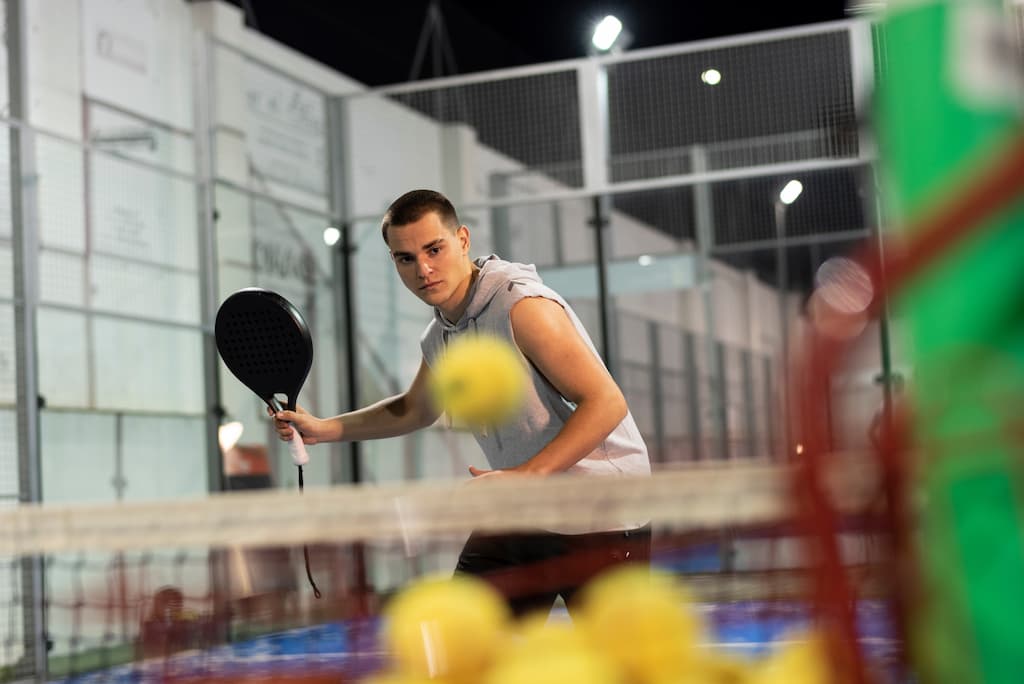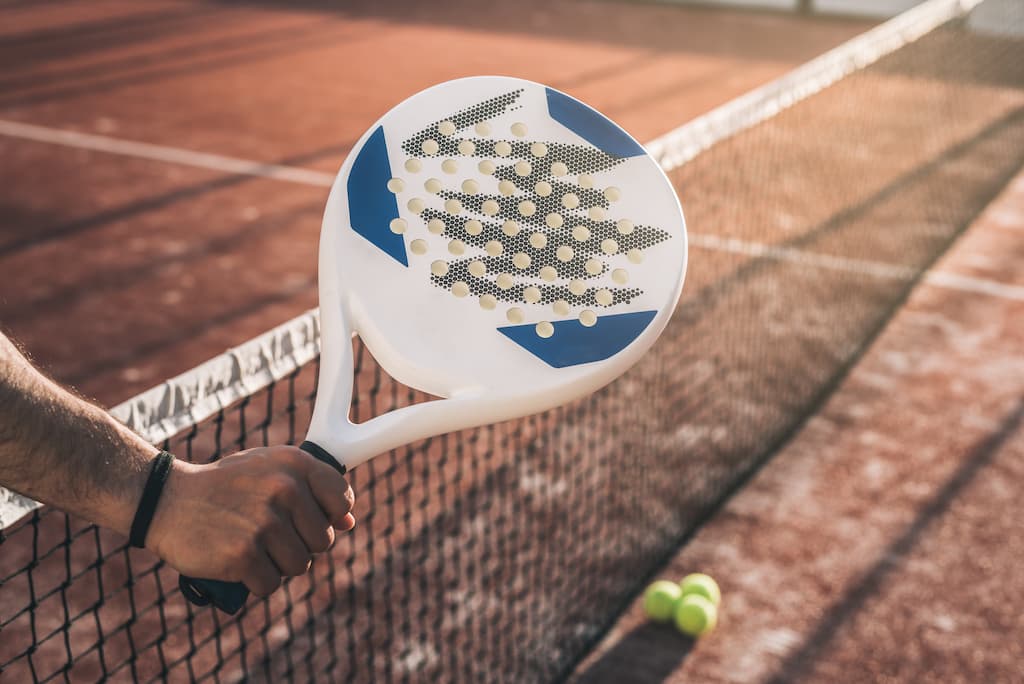If you recently picked interest in padel and have become so curious about the game, you are not alone! Padel has gained popularity over the last decade and has won the hearts of over 25 million people globally. Its accessible nature, exciting gameplay, and social aspects make it a great choice for players of all genders, abilities, and skill levels.
However, like any sport, padel has rules that players need to understand to enjoy the game and avoid unnecessary defaults.
“In my early days of playing padel, I remember disagreeing with friends over simple defaults like volleying the ball back before it has passed the net… I lost most of the arguments, along with some valuable points… That’s why I had to pay more attention to those rules… Well, not anymore because now, I am a champ,” says Sean.
That said, as a matter of great importance, let’s delve into the rules of padel, as per the International Padel Federation, to help you get started and play with confidence.
The Court and Equipment
To get a clearer picture of the padel rules, let’s get acquainted with the fundamental aspects of the game, including the court dimensions and equipment used.
Padel Court Dimensions

Padel is played on a rectangular court enclosed by glass walls and screens. The court measures 20 meters in length and 10 meters in width, with a net that stands at a height of 88 cm (and up to 92 cm at the lateral anchor points). The net divides the court into two halves and is positioned 6.95 meters from the service line on each side.
Padel Equipment
The two most essential pieces of padel equipment are the ball and racket. Padel rackets can be round-shaped, drop-shaped, or diamond-shaped and are commonly crafted from fiberglass, carbon, or a hybrid of both materials. They are perforated with small holes to reduce air resistance.
The Padel ball, on the other hand, is similar to a tennis ball but slightly smaller and bounces differently. They have lower pressure, around 11 psi, compared to tennis balls, which have around 14 psi. This adjustment complements the game’s dynamics. Padel balls are typically made of durable rubber and felt material, designed to withstand the fast-paced, intense gameplay while bouncing appropriately on the artificial grass surface.
Number of Players
Padel is a team sport featuring a pair of players against another pair. This brings the total number of padel players from both sides to four.
Rules for Starting the Game
Before starting the game, both teams must choose sides and determine who serves first by a straw draw or coin toss. One player from each team takes part in this process. The team that wins the toss/draw gets to make any of the following decisions:
- Side Choice: The toss winner can choose which side of the court they want to start on. Padel courts are divided into two halves, and players can choose the right or left side.
- Service Choice: If the winner of the coin toss doesn’t opt for side choice, they can choose to serve first instead.
- Delegate Rights: The toss winner can also delegate their right to call the shots, allowing the opposition to choose first.
- Opponent’s Decision: The player or team that loses the coin toss gets the remaining choice. For example, if the winner chooses the side, the loser can choose to serve first. If the winner chooses to serve, the loser gets to select their preferred side. However, the loser has to choose first if the toss winner requests that.
It’s worth noting that the choice of sides and the order of serving can be essential strategic decisions in Padel. Players often consider factors like the sun’s position, wind direction, and personal playing preferences when choosing.
The Serve and Service Box Rules

Once sides and service order are determined, the match begins with the chosen team or player serving from the appropriate service box.
For a serve to be accurate,
- The server must stand behind the service line, between the central service line and the side wall.
- The server must bounce the ball behind the service line, within the area between the central line and the side wall.
- The server must avoid feet contact with the service line.
- This service must be executed as an underarm serve, meaning the server must strike the ball below waist level while keeping the arm below the shoulder.
- The serve must be directed diagonally into the opponent’s court. It should land within the boundaries of the service box diagonally opposite to the server’s position.
- The first serve starts from the right-hand side, followed by alternating sides.
- If a player inadvertently serves from the wrong side, the error should be corrected as soon as it’s discovered. Points obtained in this situation are valid; however, if only one service fault has occurred before the error was discovered, it shall stand.
- When striking the ball, the server must have at least one foot in contact with the ground.
- While serving, the server is cannot walk, run, or jump. Minor adjustments that do not alter the initial stance are considered inconsequential.
- If the server missed the ball during an attempted serve, the service is still regarded as taken.
- A player with only one arm may bounce the ball using their racket.
Service Faults
- The server fails to play by the service rules listed above.
- If the server takes longer than 25 seconds to execute the serve following the previous point, it’s considered a fault. Padel encourages a swift and continuous pace of play.
- The server fails to make contact with the ball during the service attempt.
- If the served ball bounces off one of the walls within the server’s area, even if it later crosses the net and enters the opponent’s area, it’s deemed a fault.
- A fault occurs if the served ball hits the server’s partner.
- If the served ball bounces outside the lines marking the receiving player’s service area, it’s considered a fault.
- If the ball bounces within the service box and contacts the side or back wall, it remains a valid serve and must be returned by the opposing player. However, if the ball lands in the service box and strikes the wire fencing before the second bounce, it is deemed a fault.
- During the service, if the ball goes over the net, bounces, and touches the wall that marks the boundary of the opponents’ court before its second bounce, it’s considered a fault. This rule applies only to the service.
- A fault is called if the ball bounces incorrectly, making it impossible for the receiver to hit or return it.
Number of Serves
The server can have a second serve if the first one is deemed invalid. This second serve must come from the same side as the initial one and be executed immediately.
Service Readiness
The server should wait to serve until the receiving player is prepared. If the receiver is not ready or makes no attempt to return the ball, the server cannot win the point, even if the serve is accurate.
Serve Contact by the Opposition
The server wins the point if the receiving player or their partner is struck by or makes contact with the ball using their racket before it bounces.
Scoring System
The scoring system in padel is the same as tennis and goes as follows:
- Points Progression: Padel uses a points system similar to tennis but with its own terminology. The point progression is as follows:
- 1 point: “15” (also known as quince in Spanish).
- 2 points: “30” (treinta in Spanish).
- 3 points: “40” (cuarenta in Spanish).
- Deuce: When both teams or players reach 40 points, the score is called “deuce.”
- Advantage: The next point after a deuce is called “advantage” for the winners of that point. If the same pair wins the subsequent point, they win the game. If they lose, the score returns to deuce. This process continues until one pair wins two consecutive points.
- Games: Padel matches are typically played in sets, consisting of a series of games. To win a set, a team or player must secure a certain number of games (often six) with a two-game advantage. For example, if the score in a set is 6-4, the team or player leading by two games wins the set. If the score reaches 5-all, additional games are played until one pair leads 7-5. However, if the score reaches 6-6, the pair with a two-game advantage wins unless there is a previously agreed “tie-break.”
- Tiebreaker: When previously stipulated, if there is a tie at 6-all, a “tie-break” is initiated. The first couple to secure 7 points while maintaining a 2-point lead wins the tie-break.
- Match: To win a Padel match, a team or player must secure two out of three sets.
Winning or Losing Points
A team or player wins a point (and the opposition loses a point) by successfully executing a rally and causing the opposing team to make an error. Points can be won when any of the following happens:
- The ball bounces twice in the opponent’s court.
- The opponent doesn’t return the ball after it bounces correctly in their court, and then the ball passes the court boundaries and bounces the second time.
- The ball hits the opponent while in play.
- The opponent hitting the ball out of bounds.
- The opponent hitting the ball into the net.
- The opponent commits a fault during the service, like a foot fault or serving the ball incorrectly.
- The opponent hits the ball on the wire fencing, posts, or any other fixture before it goes over the net or lands on your court.
- The opponent volleys the ball back before it crosses the net.
- The opponent hits the ball twice.
- The opponent hits the ball, directly striking any of the walls in your court, the metal fence, or an object beyond the court’s boundaries.
- In Padel, only one player from a pair is allowed to hit the ball during a point. If both opposition players simultaneously or consecutively hit the ball, they will lose the point.
Ball-In-Play Rules

- Ball in Play: The ball is considered in play from the moment it’s served unless it’s out or a let. It remains in play until the point is decided. If, during play, the ball bounces on the opponent’s court and then makes contact with any part of the court, including the inside walls, the metallic mesh fence surrounding the court, the net, and net posts, it is still in play and must be returned before its second bounce.
- Alternate Hitting: Players in each pair take turns hitting the ball, with one player from each team hitting the ball alternately.
- Playing Beyond the Court: A player can play the ball into the opponent’s side, causing it to bounce and exit the court through the upper boundaries. It’s important to note that players can exit the court and hit the ball, provided it hasn’t bounced for a second time. To do so, the court must fulfill specific conditions:
- Both sides of the court should have two central entrances.
- Each entrance should measure a maximum of 0.82 x 2 meters and a minimum of 0.72 x 2 meters.
- There should be no obstruction outside the court within a minimum space of 2 meters in width and 4 meters in length on both sides.
- Out-of-Bounds Exception: If the ball crosses the net, bounces in the opponent’s court, exits the court boundaries, and then re-enters the play area after striking an object outside the court, the point is awarded to the player who initially hit the ball out of the court, regardless of whether their opponent could have potentially returned it.
- Metal Fence and Hole Exception: Should the ball cross the net, enter the opponent’s court, exit the court through a hole or defect in the metal fencing, or become lodged within it, the point is awarded to the player who struck the ball initially.
- Wall Play: A player can strike the ball against any of their walls and direct it over the net into the opponent’s court, except during the serve.
Correct Returns
- If the ball in play hits any object within the opponent’s court, such as another ball, any part of their clothing, or even their racket, the point is awarded to the player who made the shot.
- If, due to the direction and force of the shot, the ball bounces in the opponent’s court and then goes beyond the court boundaries or makes contact with the roof, lights, or any object not part of the court’s setup, the return is considered correct.
- Any pushed or scooped balls are considered good if they have not been hit twice and the impact was made in a single motion.
- When the ball bounces in the opponent’s court and touches the metal fence or any of the walls, the ball is considered in play, and the opponent must return it before it bounces again.
Repetition (Let)
A disputed point is considered a ‘let’ (or repeated) in the following situations:
- Any external element not part of the game enters the court area.
- In general, any interruption to the match caused by unforeseen circumstances unrelated to the players. For instance, if the ball splits during the game.
- If the receiver of a serve is not prepared before the serve comes in.
If a player believes that a “let” situation has occurred, as per the regulations, they must promptly inform the umpire. If play continues without notification, the player forfeits the right to request a “let.” After the “let” request has been made, the umpire assesses its appropriateness. If deemed inappropriate, the player loses the point.
Code of Conduct
Here are some essential etiquette and behavioral standards to observe during a Padel match:
- Respect Your Opponents: Embrace sportsmanship and reat your opponents with respect. Shake hands or exchange greetings before and after the match, regardless of the outcome.
- Control Emotions: Keep your emotions in check and avoid displays of frustration, anger, or unsportsmanlike conduct. Maintain a positive and respectful attitude, even during challenging moments.
- Quiet During Play: Remain calm and avoid distracting noises or comments while points are in progress. Save discussions and communication with your partner for changeovers or after the point is completed.
- Scoring Honesty: Be honest when scoring points. If you or your partner committed a fault, acknowledge it, even if the umpire did not notice.
- Prompt Play: Play reasonably and avoid unnecessary delays between points. Return to your positions promptly after a point is decided.
- Punctuality: Matches will commence promptly at the scheduled times. The match schedule will be made available in advance, and players must turn up on time. Any changes to the order of play must be approved by the tournament umpire. If ten minutes after the scheduled start time, one of the players is not on the court and ready to play, the umpire will declare the match concluded, and the opposing pair will be declared the winners.
- Unnecessary Delays: A 25-second interval is permitted between points, and a 90-second duration is allocated for changing sides. If a player is not prepared when the umpire calls “time,” a warning may be issued.
- Safety First: Prioritize safety for yourself, your partner, and your opponents. Do not take actions that could endanger others, such as reckless swings or aggressive behavior.
- Adhere to Court Rules: Follow the court’s rules, including boundaries, entrances, and exits. Respect any equipment or objects used in the game.
- Line Calls: Make line calls honestly and fairly. If there is doubt about whether a ball is in or out, give the benefit of the doubt to your opponent.
- Playing Area: During a match, including the warm-up period, players are not allowed to exit the playing area without permission from the umpire, except when changing sides.
- Umpire Respect: If an umpire is present, respect their decisions and rulings, even if you disagree. Disputes should be handled calmly and professionally.
- Equipment Care: Take care of your equipment and the court. Avoid damaging the walls, floors, or any part of the court during play.
- Ball Handling: Players are not permitted to forcefully strike the ball in any direction, such as out of the court or over the net, when it is not in play.
- Racquet Handling: Players must refrain from intentionally throwing or violently hitting their racket against the ground, net, umpire’s chair, walls, metal fencing, or any other element of the court.
- Verbal and Physical Conduct: Any behavior, attitude, aggressive gestures, or unsportsmanlike conduct by players, especially when directed towards the head umpire, umpire, opponents, partners, spectators, or other individuals associated with the tournament, will be considered severe misconduct. Additionally, any verbal expressions that display contempt towards others, even if not explicitly insulting, is unacceptable.
- Adverse Weather: In the event of adverse weather conditions or other disruptions, follow the guidelines and decisions of the tournament organizers or facility managers.
- Shake Hands: After the match, shake hands with your opponents and thank them for the game, regardless of the result.
Frequently Asked Questions
Can you Serve Overhand in Padel?
No, in Padel, you cannot serve overhand. Padel serves must be executed underhand, meaning the server must strike the ball below waist level.
What is an Illegal Serve in Padel?
In Padel, an illegal serve is a service action that violates the established rules of the game. Examples include stepping on or over the service line before striking the ball, serving from the wrong side, and serving overhand (hitting the ball above waist level during a service).
Can You Smash in Padel?
Absolutely! You can perform a smash in Padel. A smash is an offensive shot that allows a player to hit the ball powerfully and downward, aiming to make it difficult for the opponents to return. The smash is typically executed near the net when the ball is at an optimal height, allowing the player to strike it forcefully into the opponent’s court.

